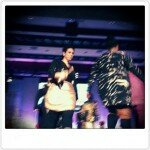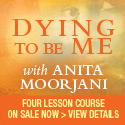Recently, Dove released a well-produced, very moving extended advertisement called “,” which at the time of this writing had just over 26 million views on YouTube. The video doesn’t advertise any particular product; rather, it documents a project in which Dove hired a trained forensic artist to sketch women as they described themselves. The artist was on one side of a curtain while the women described themselves from the other side, out of his sight. He drew them based on their own descriptions of the way they looked.
Dove also had the women intermingle with others, and after they had some time to become familiar with each other, the other people described the women for the forensic artist to sketch.
The depiction of each woman as she saw herself was then placed next to the sketch of how other people described her. Both drawings were revealed to the participants, causing them to see the vast disparity between their own self-image and how others saw them, as seen in the real beauty sketches.
The goal was to show women that sometimes they are their own worst critics when it comes to their physical appearance and that others find them more beautiful than they imagine.
Reactions
The video was very controversial. Many viewers commented, writing about how moving it was, how poignant and how it made them cry, while others complained about the lack of diversity that was represented. (One blogger that people of color only show up for a total of 10 seconds in the entire piece.) Whether or not it has a positive impact on the sale of Dove products remains to be seen, but the company can definitely take credit for starting a great deal of conversation about society and the way we perceive ourselves and others.
But what about this video resonated so strongly with so many people? Of course the video is designed specifically to elicit a strong emotional response. When these women talk about how surprised they are at how others see them, we see a bit of ourselves in there. When these women tear up at being confronted with their own self-loathing, we connect with that because we believe that is us.
But is it? One common theme in the negative reactions is that all of the women in the video are, by societal norms of beauty, all attractive (despite their self-critiques). The blogger mentioned above talks about how all of the women in the video are thin and how many of them are blond. Where does that leave curvy women? Or women of color? Or older women? Dove didn’t seem to consider this, and some feel that the company went out of their way to only depict thin, blond, young white women, alluding that, “yes, you are indeed beautiful.” Not very revelatory.
Another blogger goes out of her way to talk about how fat the ad made her feel. She felt that Dove didn’t have any place for women who weren’t thin. Even the word “fat” is mentioned only in a negative light in the video.
Effect
Will this campaign sell product? Undoubtedly. If nothing else, those 26 million (and growing) YouTube views are a success insofar as brand recognition goes. Judging by the mostly positive comments, most people seem to consider the experiment a positive one.
If the campaign serves to make women stop and make an active effort to be less self-critical, then that’s not a bad thing. But dove may want to reach out and address some of the critiques they’ve been getting. They have an opportunity to continue the conversation that came out of this project, and perhaps this time they can be a little bit more inclusive.
——-

Gabriela D. Acosta is the community manager for the MSW@USC, one of the most innovative and dynamics social work graduate programs. She is passionate about social justice, community organizing and leadership development. Connect with her on Twitter




 Because Inner Strength is a Thing
Because Inner Strength is a Thing








Recent Comments